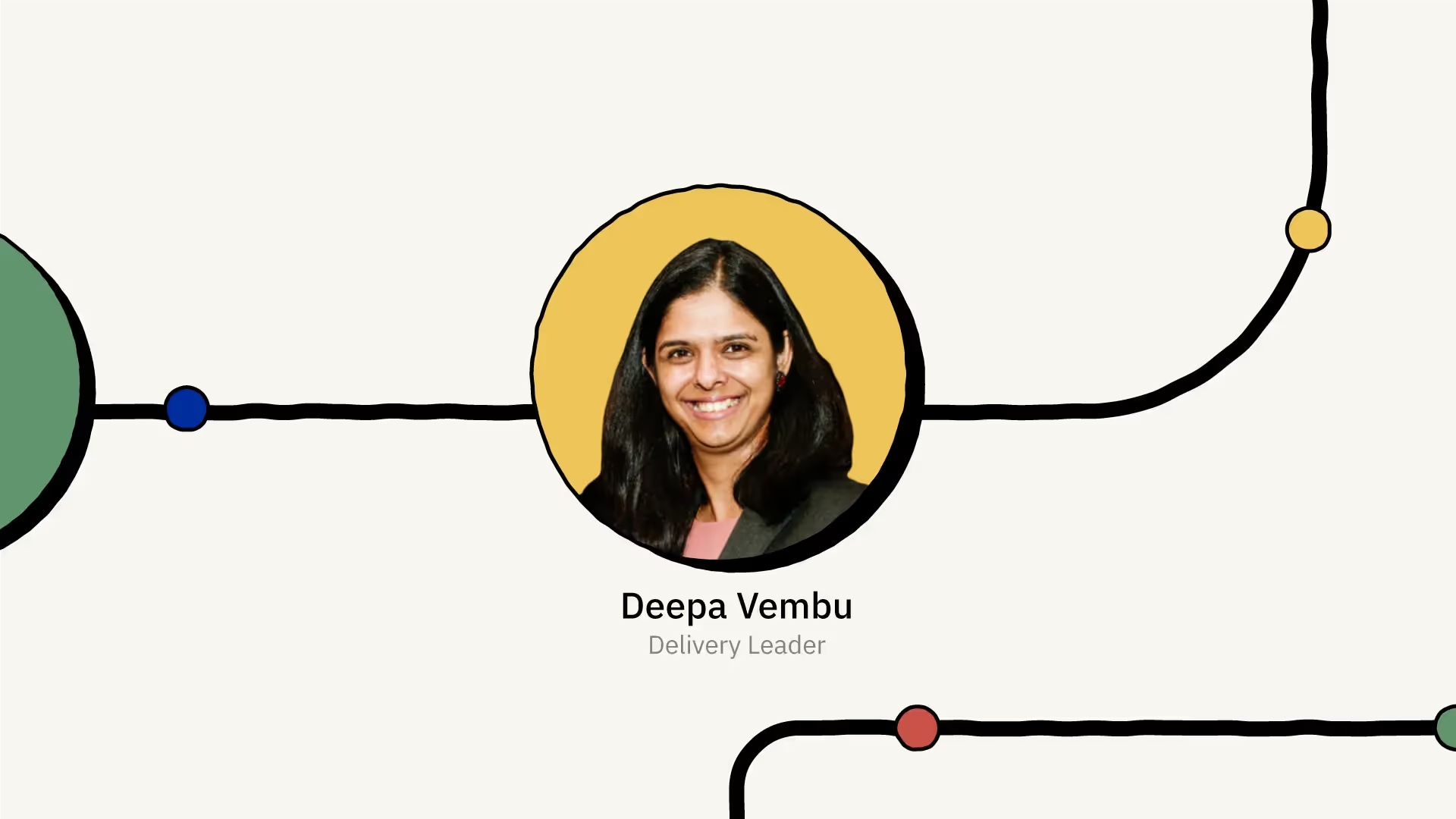In this session of Implementation Stories, we spoke to Deepa Vembu, a Product GTM specialist with over 18 years of experience in customer onboarding, professional services, delivery, and tech with companies such as Chargebee, HCL, Wipro, and Mahendra Satyam.
In her last role at Chargebee, she owned the end-to-end strategy for Product Onboarding and Professional Services and led time-bound transformations for almost 100+ customers within six months.
Deepa talks about building models for estimation, the four essential components of estimation, and takes us through a sample estimation exercise. In the rest of this article, we share the key takeaways from the session.
Why effort estimation needs to be repeated and recursive
Deepa began her session by drawing attention to the three fundamental questions raised in the context of estimation, which are:
1. Why can’t estimation be simple math of available minus needed efforts?
2. Why can’t the same effort be applied to all customer implementations?
3. Why do we have to say 'it depends' while setting expectations?
The only answer to all of these questions is that each implementation poses unique scenarios and caveats. This is also why estimation needs to be looked at as a repeated and recursive exercise, not a one-time effort.
What you need for estimation to work each time
- A customer implementation plan with an SOP with tasks to calculate the effort for every step of implementation. This plan should capture planned effort and actual effort for every project and feeds into all following implementation estimations.
- At this stage, Deepa stressed the need to include even the easy-to-miss non-core implementation steps (essential non-value adds) that aid in outcomes, such as planning, documentation, communication, etc.
- Prioritization to identify must-have tasks and those that can be delayed or after go-live
- A central repository where every task/process is tracked
Developing a model for estimation
The essential components of every estimation model include:
1. History: This entails looking at past customer implementations to arrive at the median effort (not the average effort) for each task. However, there will always be outliers with influencing factors unique to a situation or pattern of situations, so the next three elements are equally critical.
2. Classification: This focuses on looking at each project differently depending on the product scale sold, the customer segment, the customer’s needs and goals, etc.
This grouping should also take into account:
- Exceptions and a way to identify them
- Skill levels for different and complex tasks
- Team members mapped against specific skills
3. Repetition: This aspect involves looking at events or instances repeated across implementations and a way to record and measure them. Over time, you need to add such repeating events to the SOP or find ways to kill the repetition.
With the above three elements, you have arrived at the actual effort, the actual effort by a category, exceptions/events that happen during implementation so you can get to the fourth element, re-baselining.
4. Re-baselining: This is a process of iteration based on past experiences. For instance, a 5-member team that worked on a new project will progressively get more efficient with successive iterations, thereby changing the baseline. This recursive element is what re-baselining captures.
A simple estimation template
A basic estimation template should capture, at the very least, efforts, exceptions, and re-baselines. Here are the basic fields Deepa recommends in an estimation template:
- Task
- Task description
- Task priority
- Task complexity (simple, medium, complex)
- Task weightage (as a percentage, a function of priority and complexity)
- Calculated efforts
- Last baseline
- Exception pointers
- Categorization
Sample estimation plan for a planning and kickoff phase
Deepa shared a sample estimation for ‘Planning and Kickoff’, the first phase of their implementation. She recommends locking down and documenting the exact outcome of each phase, which in the case of this example, is finalizing the implementation approach and expectation-setting for it.

Deepa stressed the need to revisit the estimation template each time for every customer implementation to fill in the estimates, re-baselines, and exceptions. This way, you cover all four elements of estimation (history, classification, repetition, and baseline) in every parse for implementation.
The right time for estimation
In all cases, estimation needs to happen before the project initiation to set and manage expectations. Deepa also recommends that Implementation teams run an updated estimation for a basic project every month, so the Sales team knows what to commit to the customer. This can also help add a sense of urgency at the customer end. If the Sales team were to lay down expectations and say, for instance, ‘there is an implementation team ready for a 250-hour implementation if you get started right away’, that would set clear expectations and nudge customers to act quickly.
Best practices for documentation to aid re-baselining and estimation
Here are some suggestions and recommendations Deepa shared:
- The ideal frequency for re-baselining: once every quarter. If you find too much dynamism or variance in your project implementation or through your re-baselining exercises, it makes sense to do it more frequently to handle exceptions or issues.
- Ensuring that every customer implementation plan covers planned effort vs. actual effort while every estimation plan should have a field for exceptions.
- Templatizing all documentation as much as possible is the best way to make the estimation exercise more efficient.
- Keeping templates simple enough for both internal and external teams to understand while highlighting the absolute value add for each step to make documentation and data gathering effective (Rocketlane builds templatization into its platform so you can create templates that you can then reuse forever. These project templates and document templates help you repeat your best work, save time, and ensure consistency).
- Building ownership by having someone responsible for documentation and updating documentation is the best way to introduce estimation process triggers into the system.
Rocketlane can help make estimations for your customer implementation projects much more efficient. Besides helping you build templates, it also automatically gathers data from all your projects so you can access it all in one place without missing a single implementation. Rocketlane is built to ensure that all the four elements of successful estimation that Deepa shared, i.e., history, classification, repetition, and baselining, are taken care of, so you can focus on your team and your customers. Head here to know more.



















